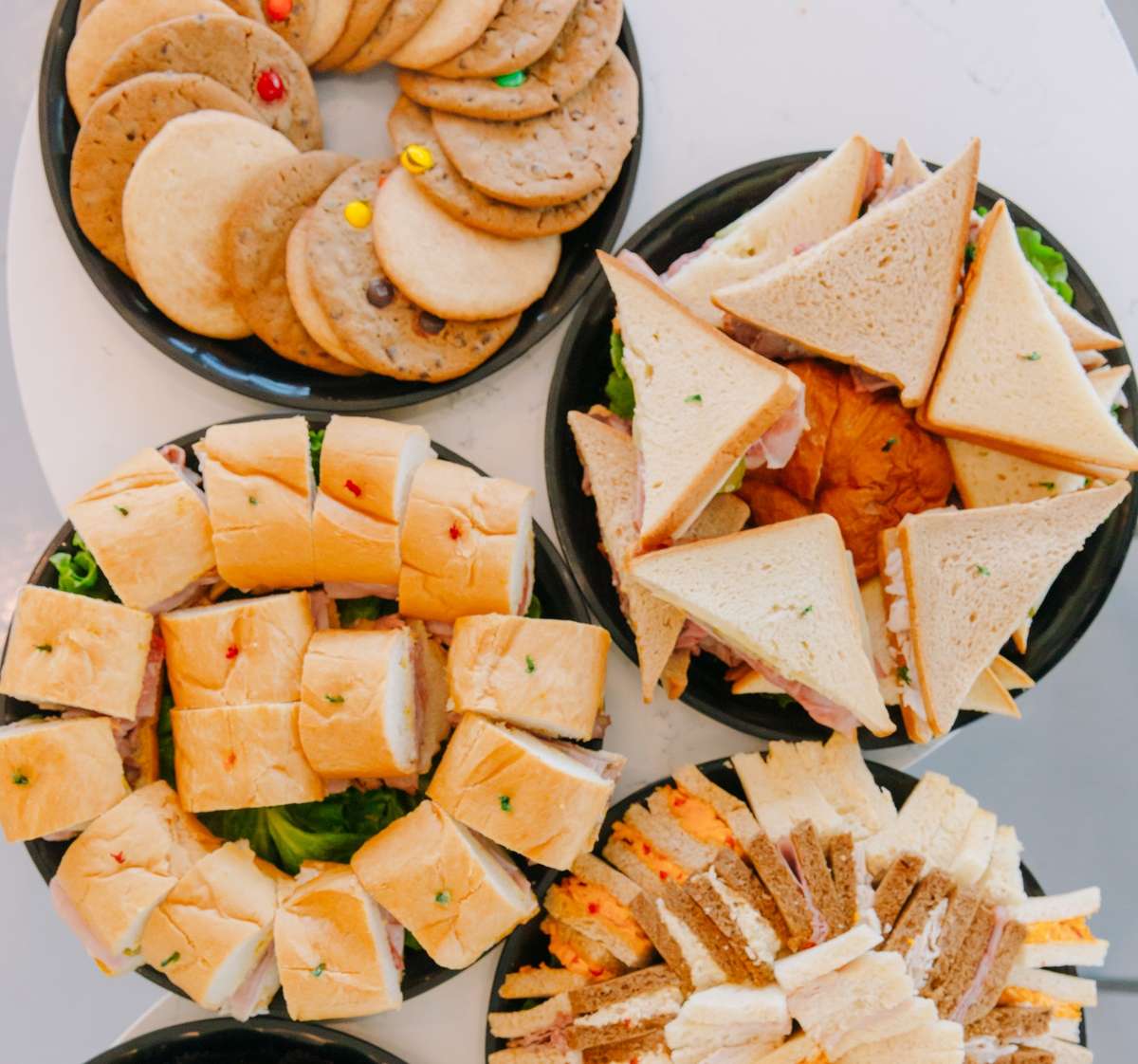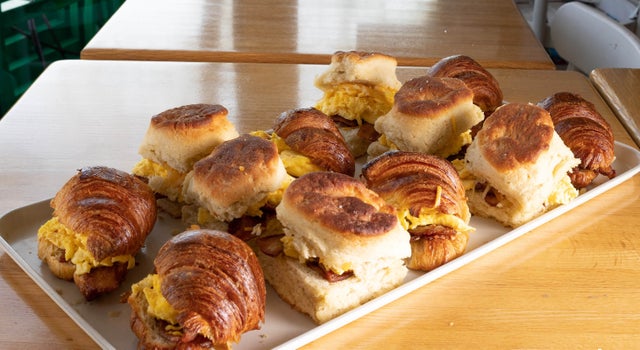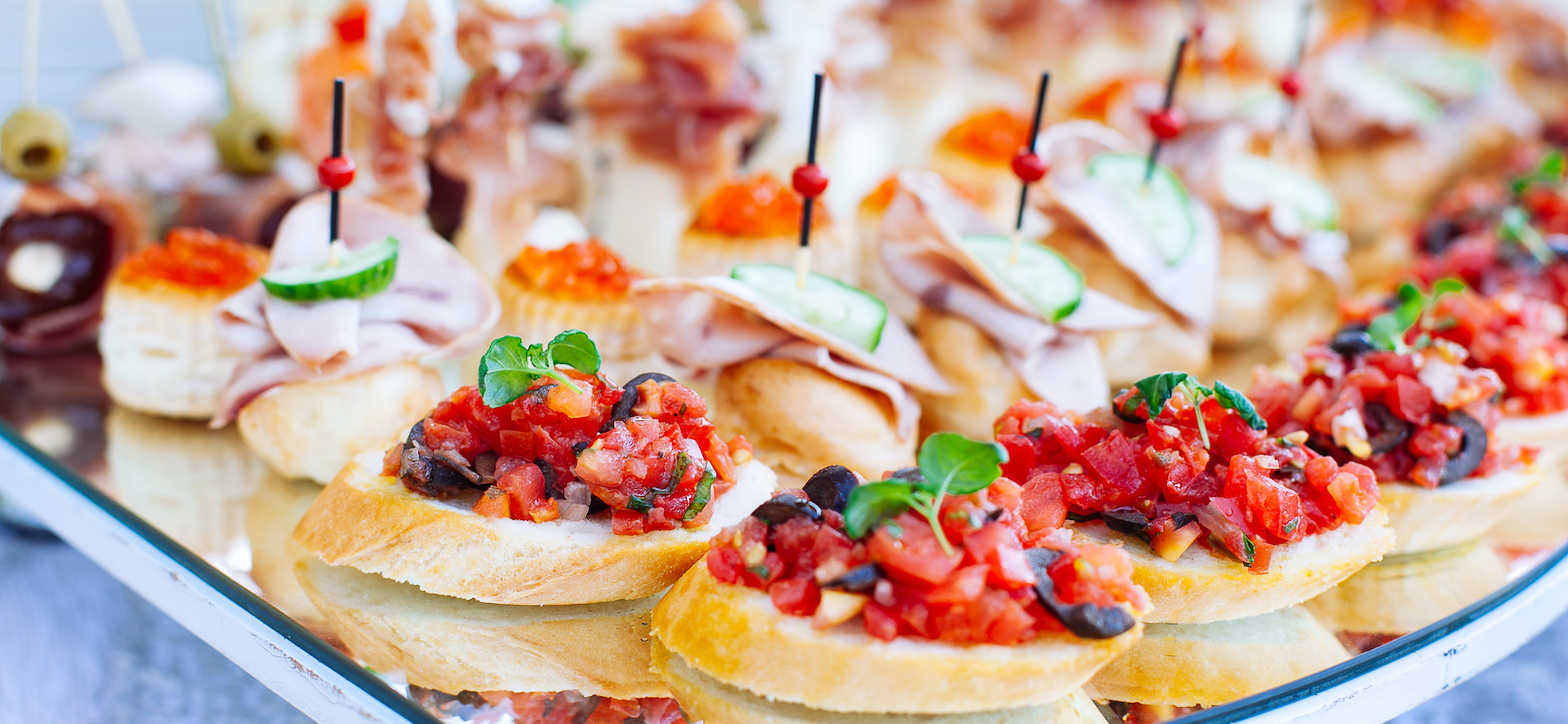Understanding the Art of Bakeshop Products: From Newly Baked Breads to Tempting Pastries and Finger Foods
The intricate art of pastry shop products encompasses a range of methods and components that change standard parts into culinary delights. From the science behind the ideal loaf of bread, where fermentation and gluten development play essential duties, to the skill needed for developing split breads, each facet discloses an engaging story of craftsmanship. The adaptability of finger foods shows how flavor and texture can be artfully combined to involve varied preference preferences. As we explore these components, one might ask yourself: what underlying concepts control the success of these cherished developments?
The Science of Bread Making
At the heart of every loaf of bread exists a fascinating interaction of chemistry and biology. The process of bread making begins with the mix of flour, yeast, salt, and water-- each ingredient playing an important duty in the final product.
Yeast, a living organism, ferments the sugars present in the flour, generating co2 and alcohol while doing so. The carbon dioxide gas produces bubbles in the dough, creating it to climb and develop a light structure. The temperature level and humidity throughout fermentation significantly influence yeast task and, as a result, the bread's taste and texture.

Mastering Pastry Strategies
Exactly how can one attain the fragile equilibrium of texture and flavor that specifies outstanding pastry? Grasping bread methods requires a deep understanding of active ingredients, techniques, and the scientific research behind them. Fundamental to this craft is the choice of high-quality components-- flour, butter, sugar, and eggs-- each playing an essential duty in the end product's taste and appearance.
The technique of lamination, which includes folding layers of dough and butter, produces the wanted flakiness in pastries like croissants and smoke pastry. Accuracy in temperature is important, as butter needs to stay cool to guarantee ideal layers. Similarly, proper mixing approaches, such as the creaming method for cakes, ensure also consolidation of air and fat, causing a light and airy crumb.
Additionally, maintaining the best moisture degrees throughout cooking can substantially influence the outcome, guaranteeing that pastries increase properly and accomplish that golden-brown coating. The art of bread likewise demands persistence and practice; each attempt improves one's ability and understanding of the detailed equilibrium called for to create irresistible breads that thrill the senses. Mastery in these techniques ultimately identifies an experienced pastry cook from an amateur.
Sorts Of Finger Foods
The globe of cooking delights extends beyond breads to include a broad range of finger foods, which are celebrated for their ease and adaptability. These bite-sized deals with are excellent for social events, providing an array of tastes and structures that deal with varied tastes buds.

On the sweeter side, miniature tarts and bite-sized cupcakes provide a wonderful surface to any kind of dish, interesting those with a craving for sweets. Cheese and charcuterie boards serve as an innovative option, permitting guests to customize their bites with an assortment of meats, nuts, fruits, and cheeses.
Flavor Profiles in Baking
Cooking is a detailed dancing of taste profiles that integrates wonderful, mouthwatering, and umami notes to produce an unified experience for the taste buds. Understanding these profiles is essential for bakers looking for to boost their developments.
Sweetness typically acts as the structure in baked products, with sugars, fruits, and natural sweeteners boosting taste depth. Ingredients such as delicious chocolate and caramel introduce intricate wonderful notes that can either dominate or match other tastes. Alternatively, tasty elements, usually located in breads and pastries, supply balance and comparison. Components like herbs, flavors, and cheeses can change a basic dough into a diverse flavor experience.
Umami, frequently ignored in cooking, plays a considerable duty in enriching flavors. Active ingredients such as aged cheeses, fermented products, or even particular nuts contribute to a full-flavored depth that improves total taste.
Furthermore, the interaction of level of acidity from ingredients like buttermilk or citrus passion can lighten up tastes, offering a rejuvenating counterpoint to sweet taste. By attentively combining these flavor profiles, bakers can craft products that reverberate with varied tastes, creating a remarkable cooking experience. Ultimately, mastering taste accounts is essential to development in the world of baking.
Crucial Baking Devices and Active Ingredients
Comprehending flavor accounts in cooking sets the stage for selecting the right devices and components that assist in the creation of exceptional baked goods. A trusted collection of baking pans-- such as sheet frying pans, loaf pans, and cake pans-- is critical for attaining preferred shapes and appearances.
Flour serves as the foundation of a lot of dishes; choosing the appropriate type-- be it bread, all-purpose, or pastry flour-- can dramatically affect the outcome. Baking powder and cooking soda are crucial for creating lift in cakes and breads.
Furthermore, integrating taste enhancers like vanilla essence, flavors, company website and citrus enthusiasm can elevate your developments. By making certain access to these essential devices and ingredients, click here for more bakers can confidently embark on their cooking trip, crafting a diverse range of fascinating baked items.
Conclusion
To conclude, the art of pastry shop items incorporates a profound understanding of both innovative methods and clinical concepts. Proficiency in bread production, bread prep work, and finger food discussion reveals the intricate relationships between processes and ingredients. Additionally, checking out diverse flavor profiles enhances the baking experience, while vital devices and components supply the structure for success. Ultimately, the charming globe of cooking grows on the harmonious interplay of scientific research and imagination, leading to a myriad of wonderful culinary developments.
Just how can one achieve the fragile equilibrium of texture and taste that defines extraordinary pastry? Basic to this craft is the choice of high-quality components-- flour, butter, sugar, and eggs-- each playing a vital role in the last product's taste and structure.

Recognizing taste accounts in baking collections the phase for choosing the right devices and active ingredients that promote the production of exceptional baked goods. Exploring diverse taste accounts improves the baking experience, while essential tools and ingredients provide the foundation for success.